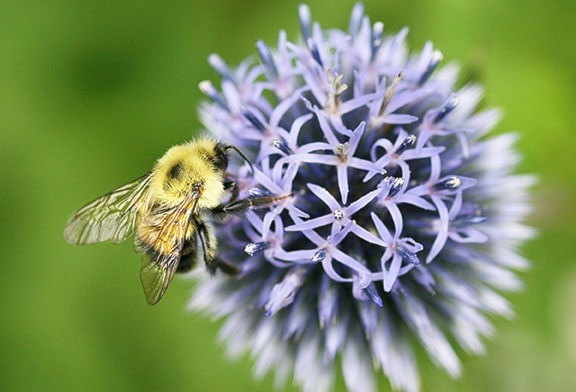Re: “Gumweed isn’t actually a weed, but a native wildflower”, (Citizen, Sept. 9)
I’d like to thank Terry Taylor for writing in about folks that seem to be on an anti-weed campaign and do a lot of pulling of these proposed “weeds” here on Vancouver Island. Sadly, not many people are educated in what is a native plant versus the introduced exotic weeds. In fact, what is “native” is very much up for debate and it could be argued that we as a species are also an invasive “weed” species.
I would definitely like folks to know about some of our important native species such as goldenrod, gumweed, Oregon grape just to name a few, which are highly sought after by our native pollinators and the introduced honey bee as well. Wait a minute, aren’t honey bees an introduced species and therefore could be included in the “weed” species? But I digress.
It is interesting that we dictate what is bad or good when it comes to the environment, but as a native pollinator educator, I often find myself addressing questions to the general public about good pollinator food plants for our native insects, especially bees. Native bees will actually take advantage of whatever they can get their mouthparts on for food, and native plants are just not always found in available quantities to support their needs sufficiently.
The bees will gravitate to what is available and I cannot think of a more amenable food source than the dandelion, for example. The amount of energy and resources that our species spends on trying to eradicate just this particular great food source for native bees, so that we can have a perfect lawn consisting of yet another introduced plant, grass, is something that I address on a regular basis in my talks. Dandelions are a perfect food source for native bees, which can be encouraged to stay in the local area until the intended crop is in bloom. This works great in say, a fruit orchard, when we leave dandelions growing until the crop flowers arrive and then we mow the dandelions down so the bees switch to our favoured crop.
Where do we stop when it comes to dealing with introduced species?
Do we eradicate oxeye daisies, blackberries, apples, and other ubiquitous plants that we might assume are native and beneficial to us, or do we stick with the classic ones that we are told to hate like broom, tansy ragwort, or sweet clover?
I personally do not advocate performing a major assault on non-native species because I think it’s being species-ist as well as essentially futile. We are hypocritical from our homo-centric view point and besides, many of these invasive plants are merely filling a void where nothing native will grow.
Sweet clover is a perfect example of this on many roadsides throughout the interior of our province, something that Vancouver Island has yet to experience. To try and eradicate purple loosestrife, grey squirrels and Norwegian rats would take herculean efforts and unless it was a confined space, is basically impossible.
It may sound defeatist but perhaps dealing with the affects that our species has caused in the first place through education might be a way to question our actions, as well as accepting what we’ve caused.
Yes, gumweed is a native species and a highly valuable one at that for this time of year, so maybe the active weed pullers out there could learn to differentiate what is beneficial for our struggling native bees versus the species of invasive plants they find undesirable.
I’m glad we’re not talking about bothersome native species such as deer, elk or cougars. Once again, who’s caused that?
Gord Hutchings (Hutchings Bee Services)
Cobble Hill
